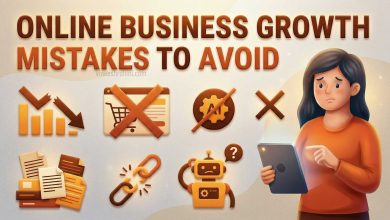What Is Headless Shopify, and Why You Should Try It? – Shopify Headless- a Complete Guide
In the ever-evolving world of e-commerce, businesses are constantly seeking innovative solutions to enhance their online presence, improve customer experiences, and stay ahead of the competition. One such solution that has gained significant attention is Shopify Headless. This comprehensive guide aims to provide a detailed overview of Shopify Headless, its benefits, implementation process, and best practices for maximizing its potential.
I. Understanding Shopify Headless:
1.1 Introduction to Headless Commerce: Headless commerce refers to decoupling the front-end presentation layer from the back-end e-commerce platform. By separating the two, businesses gain the flexibility to deliver content and experiences across multiple channels, such as websites, mobile apps, voice assistants, and more.
1.2 Introducing Shopify Headless: Shopify Headless is an approach that combines the robust e-commerce capabilities of Shopify’s back-end with the flexibility of custom front-end development. It allows businesses to leverage Shopify’s powerful infrastructure while designing and implementing unique front-end experiences tailored to their specific requirements.
II. Benefits of Shopify Headless:
2.1 Flexibility and Customization: Shopify Headless empowers businesses to create highly customized front-end experiences. By using modern front-end frameworks like React or Vue.js, developers can build unique storefronts that align with the brand identity and deliver exceptional user experiences.
2.2 Omnichannel Experiences: With Shopify Headless, businesses can easily extend their e-commerce presence to various channels and devices. Whether it’s a web store, mobile app, or voice-activated assistant, Shopify Headless enables seamless integration and consistent experiences across multiple touchpoints.
2.3 Scalability and Performance: Shopify’s infrastructure provides robust scalability and performance for handling high traffic volumes. With Shopify Headless, businesses can leverage this scalability while optimizing the front-end for superior performance, resulting in fast page load times and improved conversion rates.
2.4 Simplified Backend Management: Shopify Headless allows businesses to maintain their existing Shopify backend, including product management, inventory control, order processing, and more. This simplifies backend management while enabling the flexibility to experiment and innovate on the front-end.
III. Implementing Shopify Headless:
3.1 Choosing the Right Front-End Technology: Selecting the appropriate front-end technology is crucial when implementing Shopify Headless. Consider factors such as development expertise, scalability requirements, integration capabilities, and long-term maintenance.
3.2 Designing the Front-End Experience: Collaborate with designers and developers to design a user-centric front-end experience that aligns with your brand identity and meets your customers’ needs. Pay attention to factors such as responsive design, accessibility, and performance optimization.
3.3 API Integration and Data Flow: Implementing Shopify Headless requires seamless integration between the front-end and the Shopify back-end. Utilize Shopify’s Storefront API and GraphQL to fetch product data, manage carts, process orders, and ensure synchronized data flow between systems.
3.4 Hosting and Deployment: Choose a reliable hosting platform that supports your chosen front-end technology. Ensure proper deployment processes, version control, and continuous integration to streamline development and maintenance.
IV. Best Practices for Shopify Headless:
4.1 Performance Optimization: Focus on optimizing the front-end experience for speed and performance. Implement techniques like lazy loading, caching, image optimization, and code minification to ensure fast page load times and enhance user satisfaction.
4.2 Mobile-First Approach: As mobile commerce continues to grow, prioritize a mobile-first approach when designing the front-end. Ensure responsiveness, touch-friendly interfaces, and intuitive navigation to deliver exceptional mobile experiences.
4.3 A/B Testing and Analytics: Leverage A/B testing to experiment with different front-end designs, layouts, and user flows. Monitor key metrics using analytics tools to gain insights into user behavior, identify areas for improvement, and optimize the customer journey.
4.4 Security and Compliance: Maintain a robust security infrastructure by implementing best practices, such as secure data transmission, encryption, and compliance with industry standards like PCI DSS. Regularly update and patch both front-end and back-end systems to mitigate security risks.
V. Real-World Examples and Success Stories:
Highlight real-world examples of businesses that have successfully implemented Shopify Headless. Discuss their unique front-end implementations, the impact on user experience, and the overall business outcomes achieved.
VI. Future Trends and Considerations:
Discuss emerging trends and future considerations in the realm of Shopify Headless. Explore topics like Progressive Web Apps (PWAs), voice commerce, augmented reality (AR), and other technologies that can further enhance the headless commerce experience.
Conclusion
Shopify Headless offers businesses a powerful solution to unlock their e-commerce potential by combining Shopify’s robust backend with custom front-end experiences. By understanding the benefits, implementation process, and best practices outlined in this guide, businesses can embark on a successful Shopify Headless journey, delivering exceptional customer experiences, expanding their reach across channels, and staying ahead in the competitive e-commerce landscape. Embrace the possibilities of Shopify Headless, unleash your creativity, and revolutionize the way you engage with your customers online.



